MSDS (Material Safety Data Sheet) management software is designed to help organizations handle, organize, and access safety data related to chemicals and hazardous materials. MSDS, now more commonly referred to as SDS (Safety Data Sheet), provides critical information about the properties of chemicals, including handling instructions, safety precautions, and emergency response measures.

- Centralized Storage: It stores all SDS documents in a centralized, easily accessible location, making it simpler to find the information when needed.
- Regulatory Compliance: Helps ensure that the organization complies with regulatory requirements for SDS documentation and labeling, such as OSHA (Occupational Safety and Health Administration) standards in the U.S.
- Search and Retrieval: Provides powerful search functionality to quickly locate specific SDS documents based on various criteria, such as chemical name, CAS number, or manufacturer.
- Updates and Notifications: Keeps track of updates to SDS documents and notifies users of any changes or new versions to ensure they are always working with the most current information.
- Integration: Often integrates with other safety management systems or enterprise resource planning (ERP) systems to streamline operations and improve data accuracy.
- Reporting and Auditing: Offers reporting tools for tracking compliance and conducting audits, which can help in maintaining safety standards and preparing for inspections.
- User Access Control: Manages user permissions to ensure that only authorized personnel have access to sensitive safety information.
- Mobile Access: Many systems offer mobile access so that employees can easily access SDS information on-the-go, which is crucial in emergency situations.
MSDS management software helps organizations maintain a safe working environment by ensuring that safety data is well-organized, up-to-date, and readily accessible.
Chemicalsafety

Chemical Safety’s EH&S software addresses all of the special issues associated with storing, using, and disposing of hazardous materials.
- Store Unlimited SDSs
- Powerful SDS Search
- Print Custom GHS Labels
- Chemical Reference Database
- Chemical Approvals
- Easy-to-Use and Maintain
- OSHA Compliant
- Local Offline Backups
Chemdox

CHEMDOX safety data sheet (SDS / MSDS) software for creation and authoring of GHS / OSHA compliant SDS and for HAZMAT management.
- Safety Data Sheet (SDS / MSDS) basic settings
- Templates
- Layout
- Tables
- Graphics
- Rules in Templates
- CHEMDOX Phrase Catalog
- EUPhraC Module “ES” and EUPhraC Module “SDS Main Body”
- Additional languages, countries and versions
- Country Packages
Workhub
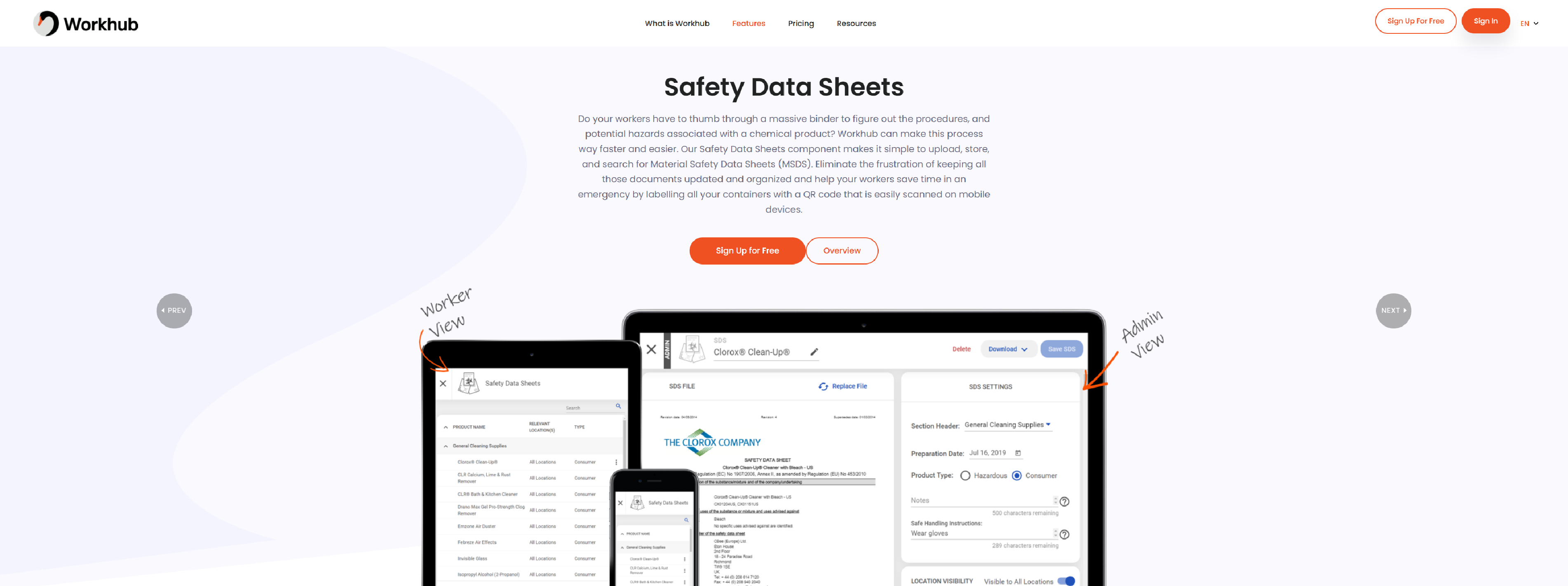
Workhub provides compliance software and recognition programs that help small and medium-sized businesses create and maintain safe, aligned, and diligent workplaces.
- All in the palm of your hand
- Wide Reach
- Damage Control
Sdsmanager
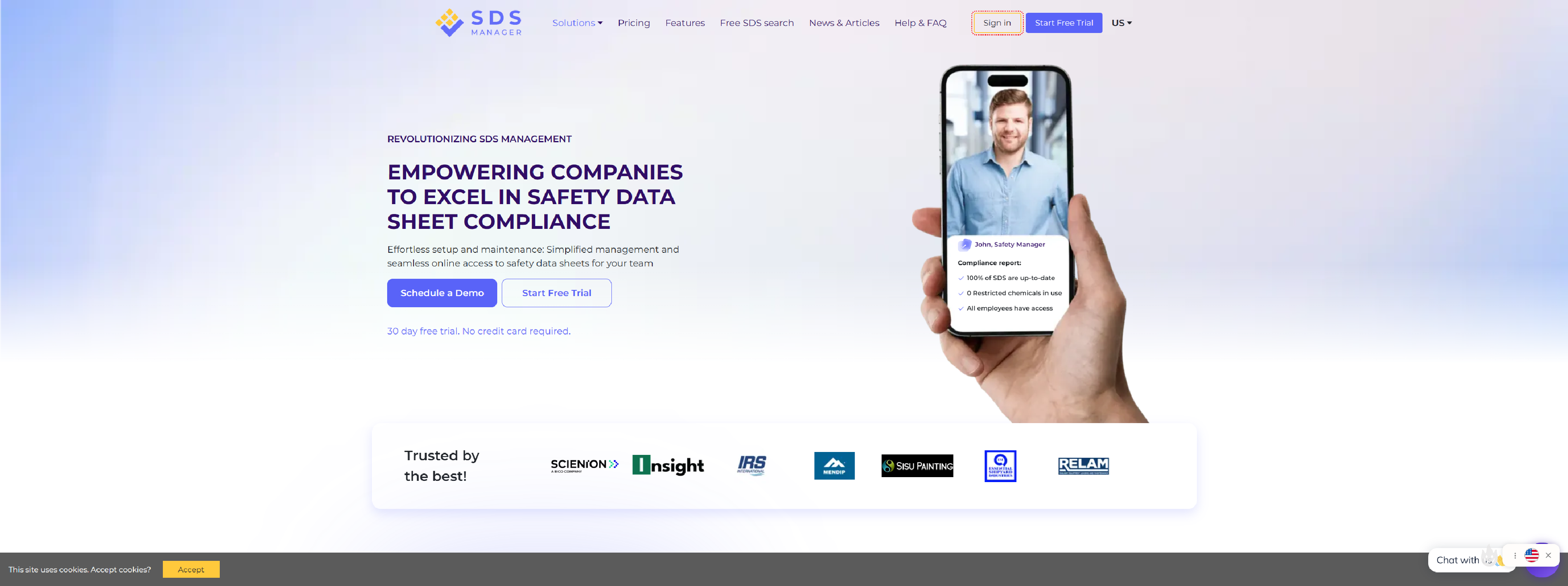
Sdsmanager – effortless setup and maintenance: Simplified management and seamless online access to safety data sheets for your team
- Chemical Compliance Dashboard
- Secondary container and NFPA labeling
- Access SDS by scanning bar code
- Ensure employees know PPE requirements
- One-click access to First-aid information
- Offline access to SDS
- Know your Hazardous chemicals
- Chemical risk assessments
- Compliance with your local regulations
Chemsoft
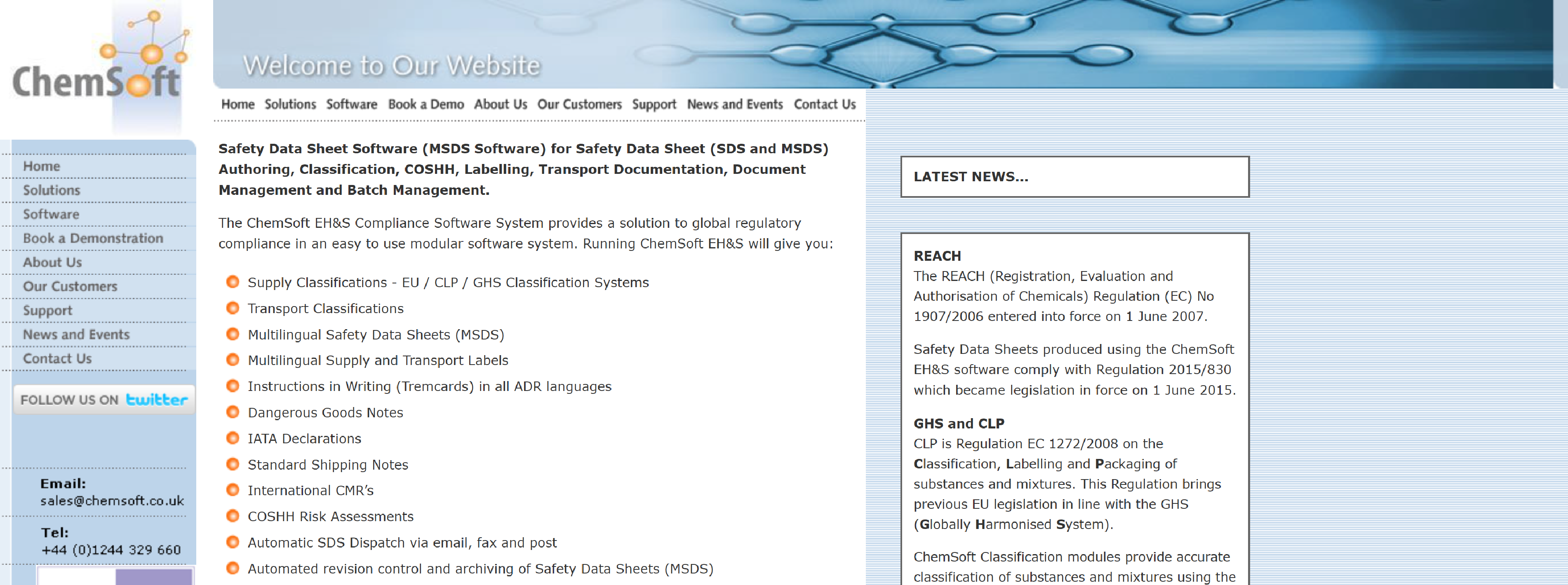
Chemsoft supplies MSDS Software and Material Safety Data Sheet software and solutions to industry.
- Supply Classifications – EU / CLP / GHS Classification Systems
- Transport Classifications
- Multilingual Safety Data Sheets (MSDS)
- Multilingual Supply and Transport Labels
- Instructions in Writing (Tremcards) in all ADR languages
- Dangerous Goods Notes
- IATA Declarations
- Standard Shipping Notes
- International CMR’s
- COSHH Risk Assessments
- Automatic SDS Dispatch via email, fax and post
- Automated revision control and archiving of Safety Data Sheets (MSDS)
- Document Management Software
- Batch Management Software
- Regulatory upgrades whenever legislation changes
- Technical and regulatory support
Techehs
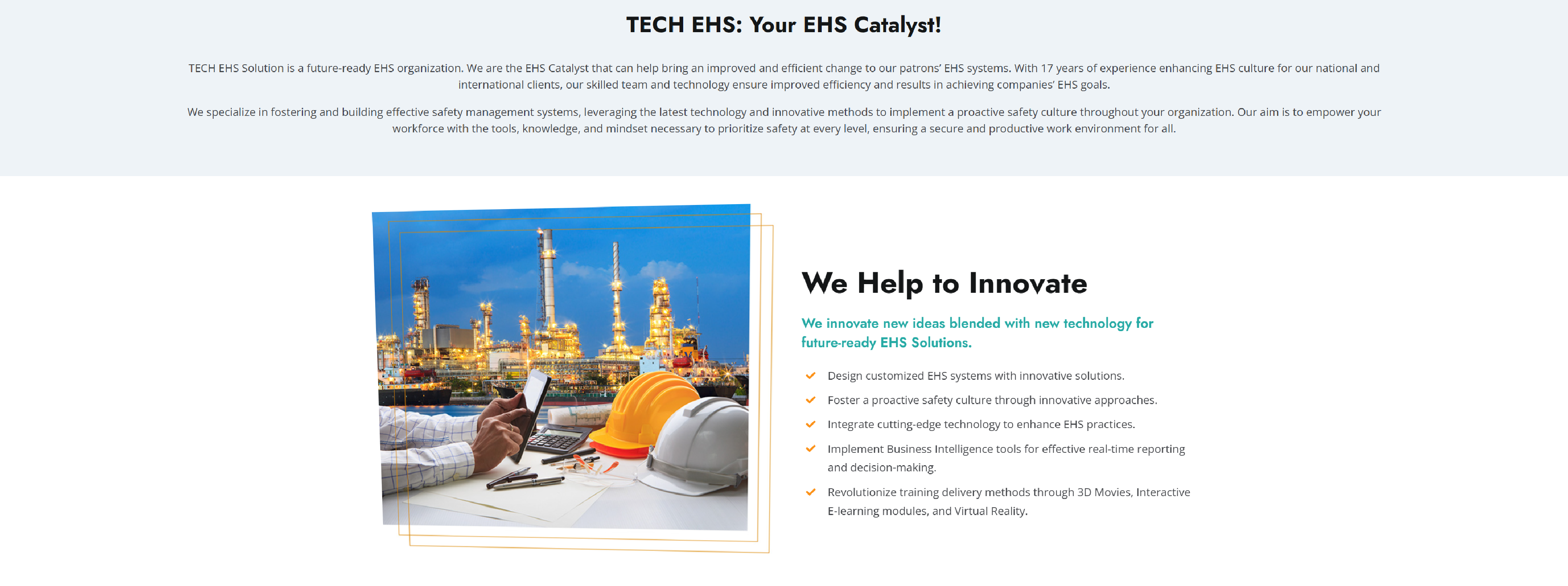
TECH EHS Solution is a future-ready EHS organization. We are the EHS Catalyst that can help bring an improved and efficient change to our patrons’ EHS systems.
- All Safety Data Sheet are stored in a central location
- Always have a access to the latest copy by maintaining history of last update
- Maintain a history of previously updated safety data sheets for reference
- Centralized records of manufacturer and Supplier of Hazardous substances and chemicals
- Attach additional files in PDF format with each Safety Data Sheet records
Safetychampion
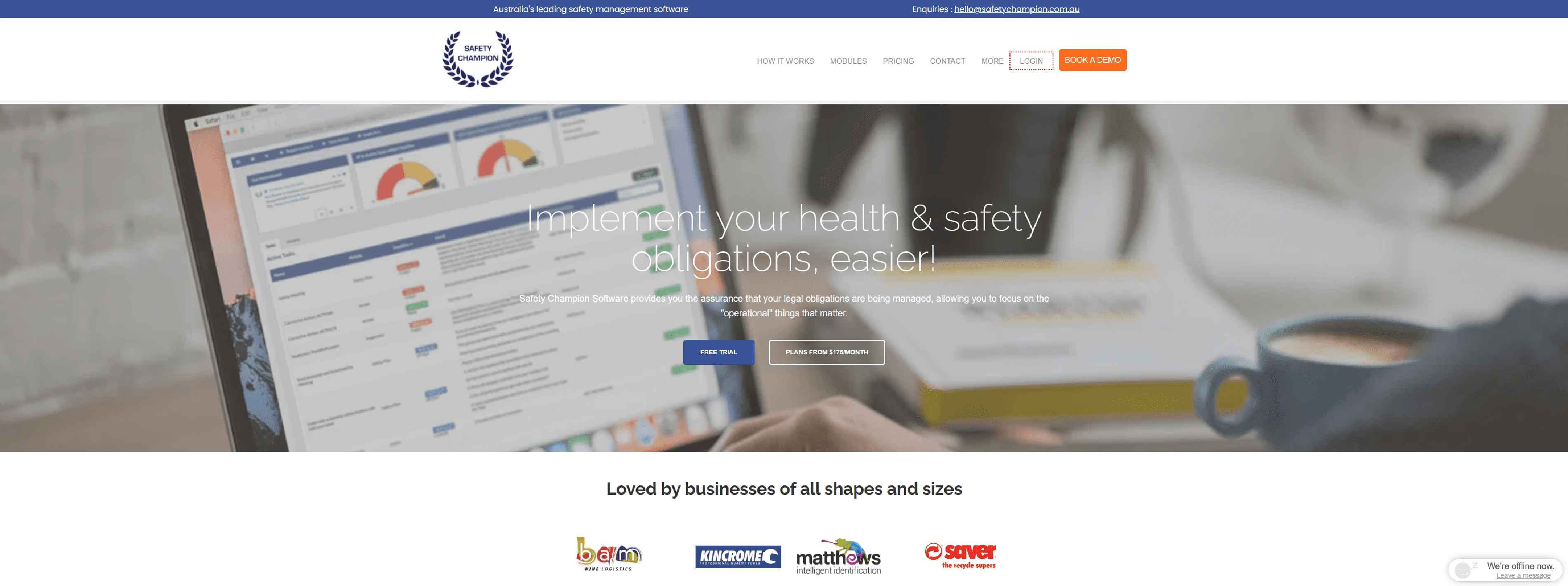
Safetychampion – simple-to-use chemical management software ensures that material safety data sheets (MSDSs) are kept within-date and available to your workers at all times.
- Site-specific storage locations
- Storage volumes
- Hazard statements, which are segmented into the physical, health and environmental impacts
- Required Dangerous Good and Hazardous Substance statements
- Transport Information including: UN Number, Packing Group, Risk and Subrisk
- MSDS download and MSDS issue date
- Risk Assessment download
Selection Criteria For Choosing MSDS Management Software
Choosing the right MSDS (Material Safety Data Sheet) management software is crucial for maintaining safety, compliance, and efficiency in handling hazardous materials. Here are some key criteria to consider when selecting MSDS management software:
1. Compliance and Regulatory Features
- Regulatory Compliance: Ensure the software helps you comply with OSHA, GHS (Globally Harmonized System), and other local and international regulations.
- Updates and Revisions: The software should provide timely updates and notifications about changes in regulations or MSDS requirements.
2. Database and Search Functionality
- Comprehensive Database: Check if the software includes a large and up-to-date database of MSDSs.
- Search Capabilities: Look for robust search functions that allow you to quickly find specific MSDSs or information.
3. User Interface and Experience
- Ease of Use: The software should be intuitive and user-friendly, with a clear interface.
- Customization: Ability to customize the dashboard and reporting tools to suit your specific needs.
4. Integration Capabilities
- Compatibility: Ensure the software can integrate with existing systems such as ERP (Enterprise Resource Planning) or EHS (Environment, Health, and Safety) management systems.
- Data Import/Export: Look for features that allow easy import and export of MSDS data.
5. Access and Security
- User Access Control: Ability to define user roles and permissions to protect sensitive information.
- Data Security: The software should offer strong security features, including encryption and secure backup options.
6. Mobile Access and Functionality
- Mobile Compatibility: Ensure the software offers mobile access or a mobile app for on-the-go access to MSDSs.
- Offline Access: Check if the software provides offline capabilities for situations where internet access is unavailable.
7. Documentation and Support
- Training and Support: Look for vendors that provide comprehensive training, user guides, and responsive customer support.
- Help Desk: Availability of a help desk or support team to assist with technical issues and troubleshooting.
8. Cost and Licensing
- Pricing Structure: Evaluate the cost of the software, including licensing fees, subscription costs, and any additional charges for updates or support.
- Trial Period: Check if the vendor offers a free trial or demo version to assess the software’s suitability before committing.
9. Reporting and Analytics
- Reporting Tools: The software should have robust reporting capabilities for generating compliance reports, tracking usage, and analyzing data.
- Analytics: Look for features that provide insights into safety trends and incident tracking.
10. Scalability
Future Growth: Ensure the software can scale with your organization’s growth, accommodating an increasing number of MSDSs and users.
11. User Feedback and Reviews
- Reputation: Research user reviews and feedback to gauge the software’s reliability, performance, and customer satisfaction.
- Case Studies: Look for case studies or testimonials from similar organizations to see how the software has been applied in real-world scenarios.
Most Common Questions Regarding MSDS Management Software
What is MSDS Management Software?
Answer: MSDS management software is a digital tool designed to help organizations store, manage, and retrieve Material Safety Data Sheets (MSDSs) or Safety Data Sheets (SDSs). It ensures compliance with safety regulations, provides quick access to critical safety information, and helps manage hazardous materials.
How does MSDS management software help with regulatory compliance?
Answer: The software helps by providing up-to-date MSDSs/SDSs, tracking regulatory changes, and ensuring that all safety documentation is current and accessible. It often includes features to manage compliance with OSHA, GHS, and other regulatory standards.
What features should I look for in MSDS management software?
Answer: Key features to look for include a comprehensive and searchable database, regulatory compliance tools, user-friendly interface, integration capabilities, mobile access, data security, robust reporting and analytics, and strong customer support.
How can the software integrate with other systems?
Answer: Many MSDS management systems offer integration capabilities with existing ERP (Enterprise Resource Planning) systems, EHS (Environment, Health, and Safety) management systems, or other enterprise software. This allows for seamless data sharing and improved workflow efficiency.
Is mobile access available?
Answer: Yes, many MSDS management software solutions offer mobile access through dedicated apps or mobile-optimized web interfaces, allowing users to access MSDSs/SDSs from their smartphones or tablets, which is particularly useful for on-the-go safety management.
How is data security handled?
Answer: Data security is typically managed through encryption, secure login protocols, user access controls, and regular backups. The software should also comply with industry standards for data protection to ensure that sensitive safety information is kept secure.
What is the cost of MSDS management software?
Answer: Costs can vary widely depending on the software’s features, the number of users, and the size of the organization. Pricing models may include one-time licensing fees, subscription-based pricing, or a combination of both. It’s important to consider both initial costs and any ongoing expenses for support and updates.
Can the software handle multiple languages?
Answer: Many MSDS management systems offer multilingual support to accommodate global operations and ensure compliance with local regulations in different countries.
What kind of support and training is available?
Answer: Vendors typically offer a range of support options including user guides, online tutorials, customer service hotlines, and on-site training. It’s important to ensure that adequate support and training are available to help your team effectively use the software.
Is there a trial period or demo available?
Answer: Many software vendors offer free trials or demo versions of their products. This allows potential customers to evaluate the software’s functionality and suitability before committing to a purchase.
How often is the MSDS/SDS database updated?
Answer: The frequency of updates can vary by vendor. Ideally, the software should have mechanisms in place for regular updates to ensure that users have access to the most current safety data and regulatory information.
How does the software handle document storage and retrieval?
Answer: The software typically includes features for storing MSDSs/SDSs in a centralized database with easy retrieval options. It should offer robust search functionality and organizational tools to manage large volumes of documents efficiently.
Can the software generate compliance reports?
Answer: Yes, most MSDS management software includes reporting tools that allow users to generate compliance reports, track safety incidents, and analyze data related to hazardous materials.
What happens if the software vendor goes out of business?
Answer: It’s important to review the vendor’s policies regarding data ownership and transition. Some vendors offer options for data export or backup to mitigate potential issues if the vendor ceases operations.
How scalable is the software?
Answer: Scalability refers to the software’s ability to grow with your organization. It should be capable of handling increasing numbers of users, documents, and regulatory requirements as your organization expands.
These questions and answers can help guide your decision-making process when selecting MSDS management software, ensuring you choose a solution that best meets your organization’s needs.